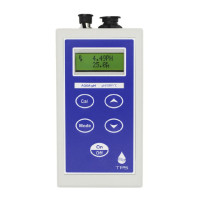12. Appendices
12.1 Soil Salinity Information
Soil salinity problems can occur naturally or can be induced in nurseries due to
the management practices in that nursery. In nature, the two most common
situations where salting is likely to occur are:
1. In soils of areas of low rainfall.
2. In soils situated close to the sea (coastal areas).
The types of salts prevalent in these two areas are different. In low rainfall areas,
the salts are commonly sulphates, chlorides, and carbonates or bicarbonates of
calcium, magnesium or sodium. In coastal areas, the salt problems are generally
caused by sodium chloride (common salt).
In nurseries, salting problems can occur where the plants are container grown, or
where the plants are rowed out in the field, if...
1. Saline water is used in watering from either bores or salty creeks.
2. Excess fertiliser is used in mixes.
3. Excessive amounts of soluble fertiliser is used in liquid feed programs.
4. Soil containing fertiliser is subject to prolonged over-sterilising or sterilising
at the wrong temperature.
5. Soils are poorly drained.
6. Unwashed sand is used in propagation mixes.
7. Salt accumulates in porous pots, e.g. clay pots.
All salts added as fertilisers are potential hazards in these nursery situations, and
particularly the soluble chlorides, sulphates and nitrates of potassium,
ammonium, calcium and sodium.
Visual symptoms of salting damage or where latent problems occur include:
1. Dead, brown margins and tips of older leaves.
2. Sudden dropping of apparently healthy older leaves and excessive soft tip
growth.
3. Salt crusting on the surface of pots.
4. Plants dying from the root upwards.
5. Bare patches of soil or uneven growth of plants in patches of the field, with
patches of salt showing on the surface where the drainage is poor.
6. Reduced root growth and little evidence of fine feeder roots.

